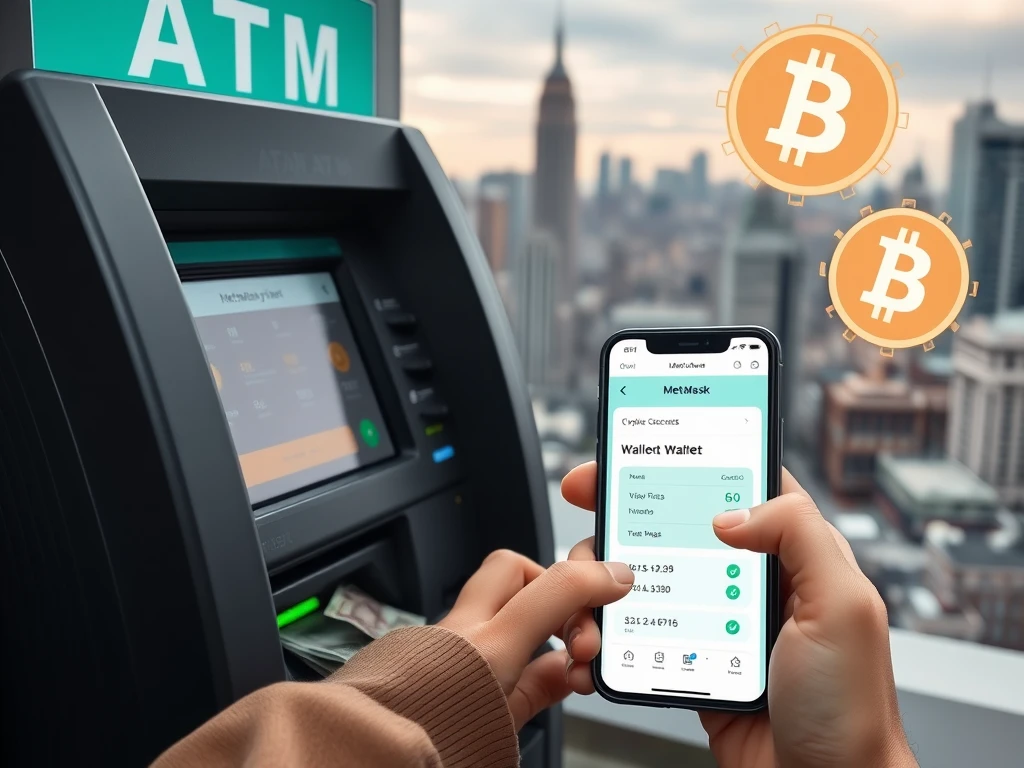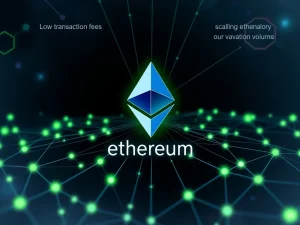Unlock Easy Cash: Beginner’s Guide to Sell Crypto from MetaMask Wallet

So, you’ve got some crypto dust bunnies accumulating in your MetaMask wallet? Maybe it’s from a cool Web3 gig, mining rewards, DeFi yield farming, or even those airdropped tokens everyone’s talking about. Now the question is, how do you turn that digital gold into good old-fashioned cash? You’re in the right place! This beginner’s guide will walk you through the ins and outs of how to sell crypto MetaMask holdings and get those funds into your bank account, or even as cash in hand. We’ll explore everything from the official KYC routes to the more private, non-KYC paths. Let’s dive in and get your crypto working for you!
Things to Know Before You Sell Crypto MetaMask Tokens
Before we jump into the ‘how-to,’ it’s crucial to understand that not all crypto is created equal, especially in the MetaMask universe. It’s not always a straightforward ‘click and sell’ process. Here’s a quick rundown of what you need to be aware of before you cash out crypto from MetaMask:
-
Airdropped Tokens and Liquidity: Received some shiny new tokens via airdrop? Awesome! But hold your horses before you plan that shopping spree. Many airdropped or less common tokens might not be listed on exchanges yet. This means there’s no active market to sell them immediately. You might see a price, but without buyers and liquidity, it’s just a number for now. Always check if your token is actually tradable before attempting to sell.
Scam Alert: Watch out for tokens with a “100% sell fee detected” warning. These are often scams. Interacting with them could lead to losing your real assets. Be cautious of fake DApps promising to ‘unlock’ these tokens; they can drain your wallet!
-
Adding Missing Tokens: Sometimes, new tokens might not automatically show up in your MetaMask crypto wallet. Don’t panic! They’re likely still there. You just need to manually add them. Grab the token’s contract address from the project’s official website or a blockchain explorer like Etherscan. Then, use the “Import Tokens” option in MetaMask to add the contract address. Voila! Your balance should appear.
-
Swap and Bridge Readiness: Even if your tokens are visible and have a listed value, direct fiat pairings might be missing. Many smaller or newer tokens can’t be directly exchanged for dollars or euros. To overcome this, you’ll often need to swap them for more liquid assets like ETH or stablecoins (USDC). These are widely accepted by fiat off-ramps.
Also, blockchain networks matter! Your tokens might be on networks like Arbitrum, BNB Chain, or Polygon, while most fiat withdrawal options prefer the Ethereum mainnet. Bridging your tokens to Ethereum might be necessary before selling. Platforms like Symbiosis.finance can streamline this process by combining swapping and bridging in one go, simplifying the user experience.
How to Sell Crypto with MetaMask Directly: The Official Fiat Off-Ramp
MetaMask itself offers a pretty straightforward way to sell crypto MetaMask holdings, particularly ETH, directly through its portfolio site. Here’s a step-by-step guide:
-
Open MetaMask Portfolio: In your MetaMask extension or mobile app, find and click the “Buy & Sell” button. This will whisk you away to the MetaMask Portfolio site, your hub for managing assets and initiating sales.
-
Start the Sale: At the top of the Portfolio page, click “Move crypto” and then select “Sell” from the dropdown menu.
-
Region and Currency: MetaMask will ask for your country of residence and preferred fiat currency. This is important as it tailors the available provider options to your location.
-
Enter Sale Amount: Choose Ether (ETH) and specify the amount you wish to convert to fiat.
-
Payout Option: Select your desired payout method. Depending on your region and the providers available, you might see options like bank account transfers, PayPal, or other services.
-
Compare Offers: MetaMask smartly gathers offers from various third-party providers such as MoonPay, Transak, and Sardine. Take a moment to compare exchange rates, fees, and estimated payout times to find the best deal for you.
-
Complete the Sale: Once you’ve chosen a provider, MetaMask will guide you through sending your ETH. You’ll confirm the transaction within your wallet, and the provider takes over to process the fiat payout to your chosen method.
Keep two important things in mind when using the MetaMask direct sell feature:
- KYC is Coming: While MetaMask itself may not require KYC, the third-party providers certainly will. Be prepared to provide identification documents as part of their verification process.
- ETH on Ethereum Mainnet Only: Currently, MetaMask’s sell feature is limited to ETH and only on the Ethereum mainnet. Remember that bridging step we discussed earlier if your ETH is on a different network.
Cashing Out Crypto via Centralized Exchanges: A Popular Fiat Off-Ramp
Centralized exchanges (CEXs) like Coinbase are another popular route to cash out crypto. Coinbase, in particular, is known for its user-friendliness, support for fiat withdrawals, and wide asset range. However, KYC verification is mandatory before you can withdraw fiat. Here’s how to use Coinbase as a fiat off-ramp:
-
Send Crypto from MetaMask to Coinbase: First, you need to transfer your crypto from MetaMask to your Coinbase account. Log into Coinbase and click “Send & Receive.” Switch to the “Receive” tab, choose the cryptocurrency (e.g., ETH or USDC), and copy the provided Coinbase wallet address. Double-check that the network matches (e.g., Ethereum ERC-20 for ETH).
Now, go to MetaMask, click “Send,” paste the Coinbase address, and enter the amount to transfer. Triple-check the network! Sending to the wrong network can mean lost funds. Confirm the transaction, and your crypto should appear in your Coinbase account shortly.
-
Sell Crypto for Fiat on Coinbase: Once your funds are in Coinbase, navigate to “Buy & Sell” and switch to the “Sell” tab. Choose the crypto you just transferred, specify the amount you want to sell, and select your payout destination (linked bank account, PayPal, or Coinbase balance). Review all details, including fees, and click “Sell.”
Important Note: When using centralized exchanges for withdrawals, be mindful of minimum withdrawal amounts and any associated fees. Always check these details beforehand to ensure they are acceptable to you.
Peer-to-Peer (P2P) Selling with KYC: More Control Over Your Fiat Off-Ramp
Peer-to-peer (P2P) platforms offer a different approach. Instead of selling to the exchange, you’re selling directly to another user. You can choose buyers based on their offers and preferred payment methods (bank transfer, Revolut, Wise, etc.). The platform acts as an intermediary, holding the crypto in escrow until the buyer sends payment to your account, at which point you release the crypto. Centralized exchanges offering P2P usually require KYC for these transactions.
Selling via P2P on Binance:
- Go to Binance and navigate to “Trade” > “P2P.”
- Select the cryptocurrency you want to sell and browse the list of available buyers and their offers.
- Choose a suitable deal, confirm the order, and wait for the buyer to make payment.
- Once you’ve verified that the payment has arrived in your account, confirm receipt on the platform to release the crypto from escrow to the buyer.
Non-KYC Fiat Off-Ramps: Cashing Out Privately from Your Crypto Wallet
For those prioritizing privacy and wanting to cash out crypto from their MetaMask wallet without KYC, decentralized P2P platforms provide an alternative. These platforms connect you directly with other traders, often with minimal or no KYC. However, remember that with less regulation comes increased responsibility for your own security.
- LocalCoinSwap: This non-custodial P2P marketplace supports a wide array of cryptocurrencies and payment methods, including cash. It provides escrow services and prioritizes user privacy.
- Bisq: Bisq is a fully decentralized exchange that supports cryptocurrencies like Bitcoin and Monero (XMR). Operating on a P2P protocol, it eliminates the need for user accounts or KYC.
Important Caution: When using non-KYC platforms, thorough vetting of your trading partner is essential. Check their reputation, trade history, and always adhere to the platform’s safety guidelines to minimize risks.
Using Crypto ATMs: A Physical Fiat Off-Ramp for Your MetaMask Funds
Cryptocurrency ATMs, often called Bitcoin ATMs, provide a tangible way to convert your digital assets into physical cash. Here’s how to use them as a fiat off-ramp from your MetaMask wallet:
-
Locate a Crypto ATM: Use websites like CoinATMRadar to find a cryptocurrency ATM near you. Check the details to ensure it supports the cryptocurrency you want to withdraw and the services offered.
-
Prepare Your MetaMask Wallet: Bitcoin ATMs primarily support Bitcoin (BTC). You might need to swap your tokens for BTC within MetaMask using a DEX beforehand. Be aware of transaction fees and exchange rates during this swap.
-
Initiate Withdrawal: At the ATM, select the cash withdrawal option. The ATM will prompt you for the withdrawal amount and display a QR code representing its wallet address.
-
Transfer Funds from MetaMask: Use your MetaMask wallet to scan the ATM’s QR code. Enter the exact crypto amount and confirm the transaction. Network congestion can affect transaction times.
-
Collect Cash: Once the blockchain confirms the transaction, the ATM will dispense the cash equivalent, minus any fees. This process can take varying times depending on network conditions.
Important Considerations: Crypto ATM fees are typically high. While smaller transactions often bypass KYC, larger withdrawals may still require it. Be prepared for potential KYC even with ATMs.
Are MetaMask Crypto Transactions Taxable? Understanding Your Obligations
Let’s talk about the less exciting but crucial part: taxes. Selling crypto from your MetaMask crypto wallet and converting it to fiat is generally considered a taxable event in many jurisdictions. Understanding the rules is essential to stay compliant.
Selling Crypto = Potentially Taxable
In countries like the US, selling crypto for fiat is often treated as selling property. This means if you bought ETH at $1,000 and sell it for $1,500, the $500 difference is a capital gain and is usually taxable. Even swapping crypto for crypto (e.g., ETH for USDC) can trigger tax obligations, regardless of fiat involvement. Any crypto trade can be a reportable event.
To simplify tax reporting, keep detailed records of:
- Purchase and sale dates for each asset
- Amounts bought and sold
- Fiat value at the time of each transaction
- Any transaction fees paid
Know Your Local Crypto Tax Rules
Cryptocurrency tax laws are not uniform globally. Regulations vary significantly between countries and even within regions. In the US, for instance, selling crypto might fall under capital gains tax or even money transmission laws depending on the specifics. Other countries might have more or less stringent rules.
Actionable Advice:
- Research your local crypto tax laws. Even if they seem unclear, understanding the basics is important.
- Stay updated. Crypto regulations are rapidly evolving, so keep abreast of changes.
- Consult a professional. If you’re uncertain about your tax obligations, seek advice from a crypto-savvy accountant or legal advisor. They can help you navigate complexities and avoid potential issues.
Even if you opt for non-KYC methods or decentralized platforms, tax authorities may still expect full reporting of your crypto activities. Proactive tax planning can save you headaches and potentially money in the long run. Happy (and tax-compliant) cashing out!










